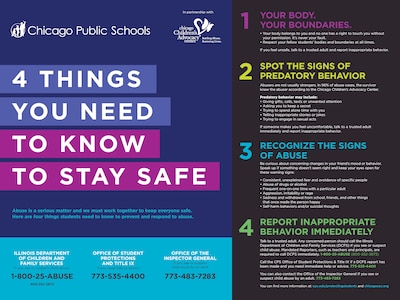Instability in leadership at Chicago schools — from a revolving door of chief executives to changes in network chiefs — contributed to a gap in oversight that failed to protect student victims of sexual abuse, according to a preliminary report released today.
“This turnover makes it difficult to instill and maintain productive policies and procedures, stable systems independent of any person, and cultures of compliance,” according to the draft of a report authored by former federal prosecutor Maggie Hickey, who has been hired by Chicago Public Schools to review the district’s handling of sexual misconduct in schools and make policy recommendations.
The report identified “systemic deficiencies…at all levels: in the schools, the networks, the Central Office, and the Chicago Board of Education (Board),” the report reads. “CPS did not collect overall data to see trends in certain schools or across geographies or demographics. Thus, CPS failed to recognize the extent of the problem.”
“While there were policies and procedures about sexual misconduct on the books, employees were not consistently trained on them, and there were no mechanisms to ensure that they were being uniformly implemented or to evaluate their effectiveness.”
A systemic failure to properly address student sexual abuse across the last decade was first revealed in the Chicago Tribune earlier in the summer. In response, the district implemented several measures including conducting new background checks for school staff, removing the principals of two schools, and creating a new Title IX office. The search for a Title IX officer to lead the 20-person effort is still underway, the district said today.

CPS CEO Janice Jackson told Chalkbeat that the report is “very actionable” and that her team is combing through it to move quickly on to-do items that need to happen before school starts in September. That includes the rollout of an awareness campaign aimed at families that includes posters and fliers at the school level, as well as trainings for parents through the district’s 13 Parent University centers. The posters, designed in conjunction with the Chicago Children’s Advocacy Center, list signs of predatory behavior and sexual abuse. They offer victims three numbers to call: the state’s Department of Children and Family Services (DCFS) line, the new CPS Office of Student Protections and Title IX, and, in the case that suspected abuse is taking place by an adult, the Office of the Inspector General.
The report highlights the tension with principal discretion — that is, the practice of giving principals a significant amount of autonomy over the management of their buildings — and says it played some role in the mismanagement of cases, since principals didn’t always follow proper reporting procedures. (The report also spells out that such policies were not in one single place and were difficult to access all together.) “CPS recognizes the need for school autonomy and flexibility, but left too much discretion with principals regarding sexual misconduct against students,” the report reads.
Asked if that finding will prompt her to reconsider principal autonomy, Jackson said the district does have a responsibility to provide more guidance in central management. “Our school system has 600 of the best principals leading schools, and they exercise good judgement,” she said. “What the report points out to me is that the district has a responsibility to better centralize policies and that’s non-negotiable in certain areas.” That will mean making reference checks for new staffers a requirement — prior to the report, some principals did them and others did not — and providing checklists on what to do when suspected abuse occurs.
Board of Education President Frank Clark said in a statement that “student safety is the highest priority for the Board, which is why we took immediate action before this preliminary report was completed. We will use this report as a roadmap to build upon the significant steps the district has taken to strengthen safeguards and supports for our students.”
Find the current draft of the report below.

